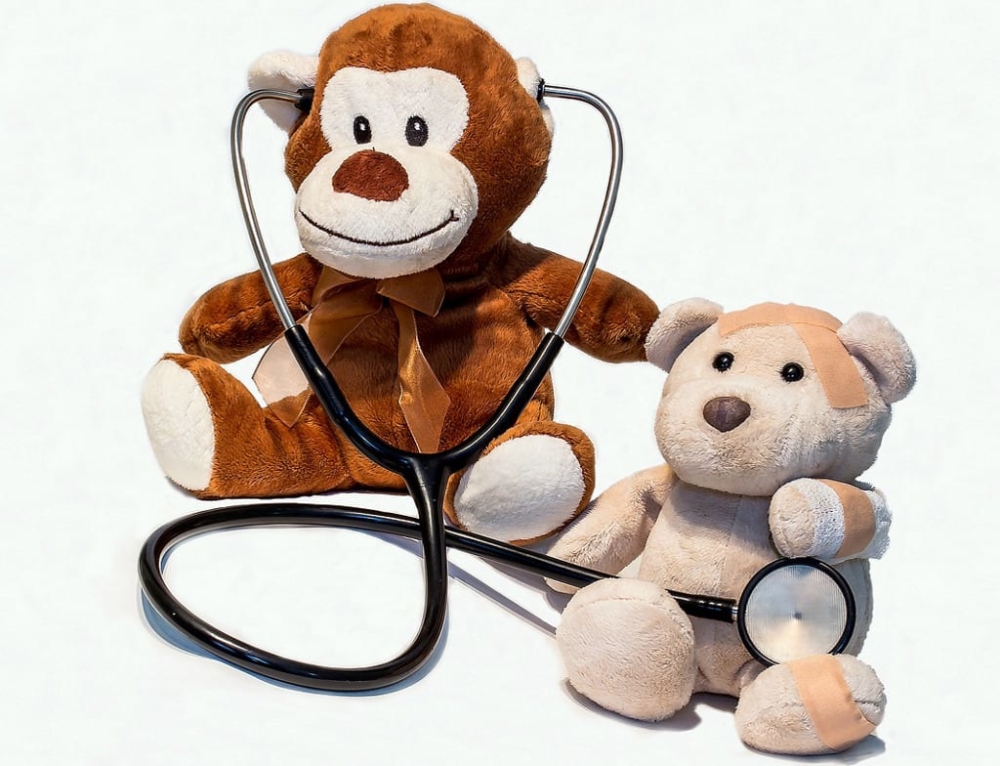Children need the full alphabet of vitamins and minerals to stay healthy. So how much do they need and what foods are the best sources?
Many of the vitamins and minerals a child’s body needs to stay healthy are easy enough to get through a balanced diet.
Minerals v vitamins
These terms are bandied around on television ads and cereal boxes but what is the difference between minerals and vitamins?
Essentially, vitamins are organic compounds which can be altered or metabolised to perform functions like release energy and act as antioxidants. Minerals, conversely, are inorganic and indestructible elements – some play vital roles in bone health and are necessary for oxygen to be carried through the blood.
Here’s a list of the essential vitamins and minerals our children need, where to find them and the recommended daily intake (RDI), as specified by the Food Standards Code.
Vitamins
Vitamin A
Vitamin A is important for normal immune function, as well as being important for healthy skin and eyesight.
- When it’s deficient: Vitamin A deficiency is very rare because of our varied diet that includes a range of fresh vegetables but it is a growing problem in developing countries1. Vitamin A deficiency symptoms include eye problems such as night blindness, dry eyes and eye inflammation.
- Best sources: beef liver, orange vegetables such as carrots and kumera, and dark green leafy vegetables.
- RDI: 300 micrograms/day (1-3 years); 750 micrograms/day (4+ years).
Vitamin B group
The B group of vitamins is a collection of eight water-soluble vitamins that work together as a team in the human body so getting the right ratio of each B vitamin is important. The major B vitamins are:
- B1 – Thiamine
- B2 – Riboflavin
- B3 – Niacin
- B6
- Folate
- B12
Vitamin C
Vitamin C is one of the body’s most powerful antioxidants, helping to get rid of free radicals. It keeps the immune system running and helps make the strong connective tissue that holds the muscular-skeletal system together.
- When it’s deficient: Even a mild deficiency can present with symptoms, which include fatigue, appetite loss, frequent infections and bruising easily.
- Best sources: Basically every fresh fruit and vegetable has some vitamin C.
- RDI: 30mg/day (1-3 years); 40mg/day (4+ years).
- What to eat: 1 medium kiwi fruit provides 75mg of vitamin C.
Vitamin D
The most important role of vitamin D is to regulate how much calcium our bodies absorb from the food we eat to ensure that levels of calcium are regulated properly in the body. The immune system also needs it to function effectively.
- When it’s deficient: Children who do not get enough vitamin D can develop rickets – that is, their bones do not grow and harden properly. While not common in children, Vitamin D deficiency has been known to be quite prevalent in older adults2.
- Best sources: 10-20 minutes of sunshine a day OR cod liver oil, oily fish, dairy products, and eggs.
- RDI: 3 microggrams/day (1-3 years); 10 micrograms/day (4+ years)
- What to eat: 1 tablespoon of cod liver oil has 34 micrograms of vitamin D.
Vitamin E
Vitamin E helps to protect cells from free radical damage.
- When it’s deficient: Vitamin E deficiencies are not too dramatic but can result in insomnia or nervousness and, when severe, lead to softening of the bones and teeth.
- Best sources: Nuts, seeds and vegetable oils.
- RDI: 5mg/day (1-3 years); 10mg/day (4+ years)
- What to eat: ½ medium avocado provides 3.2mg of vitamin E.
Vitamin K
Vitamin K is needed to make the blood clot quickly whenever injury occurs.
- When it’s deficient: Vitamin K deficiency is rare – almost everyone gets enough from their own bacteria or their food.
- Best sources: Vitamin K is found in green vegetables and soybeans, but most comes from gut micro-organisms.
- RDI: Under the Food Standards Code, the Estimated Safe and Adequate Daily Dietary Intake (ESADDI) is 15 micrograms/day (1-3 years); 80 micrograms/day (4+ years).
- What to eat: 1 large egg provides 25mcg of vitamin K.
Minerals
Calcium
Calcium is the most abundant mineral in the body with 98% in the bones, 1% in the teeth and 1% circulating in the blood. While it’s essential for healthy bones and teeth, calcium also helps normal blood function and to send messages along nerves.
- When it’s deficient: Calcium deficiency is becoming increasingly prevalent and can result in brittle bones, teeth problems and eventually osteoporosis.
- Best sources: Dairy food, green leafy vegetables, and legumes.
- RDI: 700mg/day (1-3 years); 800mg/day (4+ years).
- What to eat: 1 cup of milk provides 300mg of calcium.
Iodine
Iodine is essential to make the thyroid hormones which play a big role in growth, cell reproduction, nerve functions and metabolism regulation.
- When it’s deficient: Deficiency is becoming far more common and in pregnant women can cause major retardation in their babies.
- Best sources: seafood, yoghurt, eggs and dairy.
- RDI: 70 micrograms/day (1-3 years); 150 micrograms/day (4+ years).
- What to eat: 1g of iodised salt provides 77mcg of iodine.
Iron
Iron is essential to carry oxygen in the blood. Babies are born with about six months’ supply of iron. When solid food is introduced, it is suggested they eat iron-rich foods. Babies and toddlers need plenty of iron they grow so rapidly.
- When it’s deficient: About 25% of the population are at risk of iron deficiency, which can result in iron deficiency anaemia. Symptoms of iron deficiency include fatigue, poor immunity, behavioural problems and memory problems. Children and pre-menopausal women are most prone to iron deficiency anaemia.
- Best sources: Lean red meat, dried beans, egg yolks, iron-fortified cereals, and oysters.
- RDI: 6mg/day (1-3 years); 12mg/day (4+ years).
- What to eat: 1 cup of chickpeas provides 3.2mg of iron.
Magnesium
Every cell in the body needs magnesium to produce energy. It helps with making protein and sending messages along the nerves. It is necessary for normal electrolyte balance, and nerve and muscle function. It can even help to reduce tiredness and fatigue.
- When it’s deficient: Research suggests up to three-quarters of the population don’t get enough magnesium nevertheless health problems from deficiency are not common.
- Best sources: Green leafy vegetables, whole grains and some legumes.
- RDI: 80mg/day (1-3 years); 320mg/day (4+ years).
- What to eat: ½ cup cooked frozen spinach provides 75mg of magnesium.
Phosphorus
This mineral is found in every cell in the body and is essential for growth and bone and teeth formation. Phosphorus works with the B vitamins and is important for healthy teeth and bone structure, as well as normal energy metabolism.
- When it’s deficient: As phosphorus is found in most food, dietary phosphorus deficiency is usually seen only in cases of near starvation.
- Best sources: Fish, meat, poultry, dairy products, eggs, peas, beans, and nuts.
- RDI: 500mg/day (1-3 years); 1000mg/day (4+ years).
- What to eat: 1 cup plain non-fat yoghurt provides 383mg of phosphorus.
Zinc
Zinc helps the immune system fight off invading bacteria and viruses. It also helps heal wounds and is important for the senses of taste and smell. The body needs zinc to make the genetic material in all cells.
- When it’s deficient: Deficiency is rare but if it occurs it can cause slow growth in babies and children.
- Best sources: Oysters, red meat, whole grains, beans and nuts.
- RDI: 4.5mg/day (1-3 years); 12mg/day (4+ years).
- What to eat: ¼ cup wheatgerm provides 3.6mg of zinc.
1 Source: World Health Organisation: Global Prevalence of Vitamin A Deficiency.
2 Source: The International Society For Clinical Densitometry: Vitamin D Deficiency: The Silent Epidemic of the Elderly.
This article was written by Fiona Baker for Kidspot Australia and adapted for Kidspot New Zealand. Sources include National Health and Medical Research Council.
Find out more:
- Vitamins and minerals during pregnancy
- Probiotics and kids health
- Best breakfast nutrition for a school day
- Bacteria kids need for good immunity







Leave A Comment
You must be logged in to post a comment.